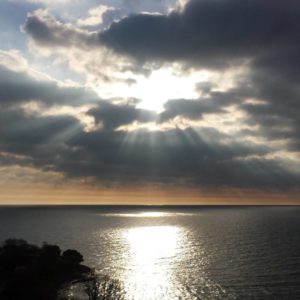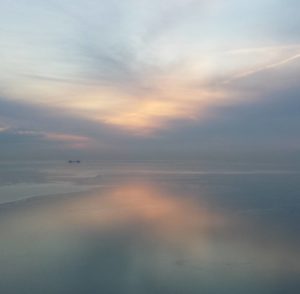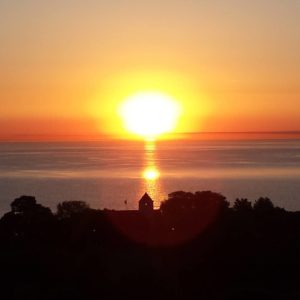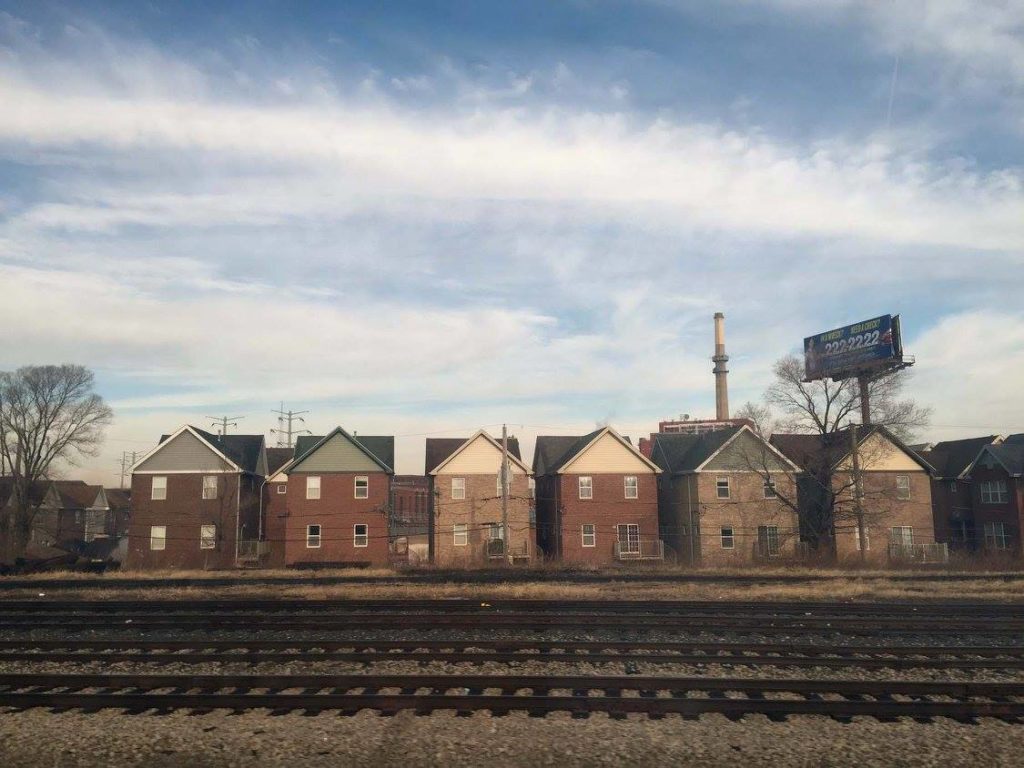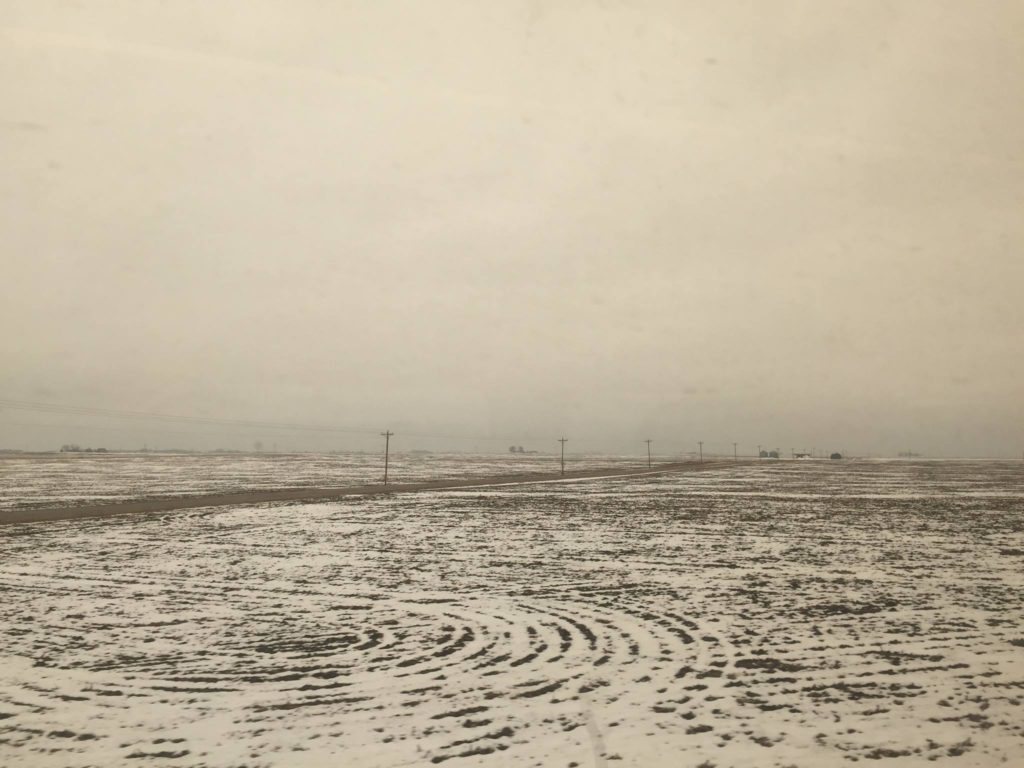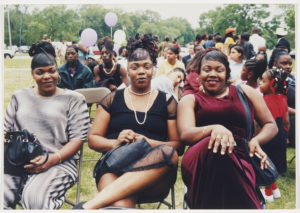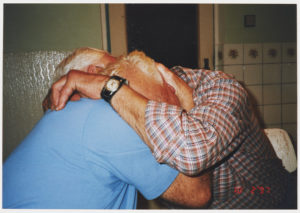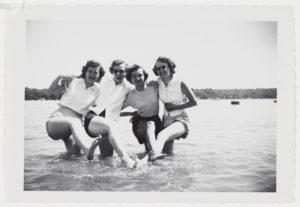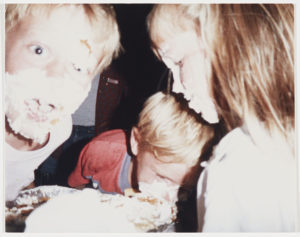Art and Ritual; Facebook and the Archive
August 14, 2017 / 0 Comments
A part of my morning ritual is to check in with Facebook. Each day I am greeted by a picture of a sunrise posted by artist Barbara Koenen, who photographs the sun ascending over Lake Michigan from her apartment window in Chicago. Using her smartphone, she then posts her images on Instagram and Facebook, where followers Like, Comment, and Share.
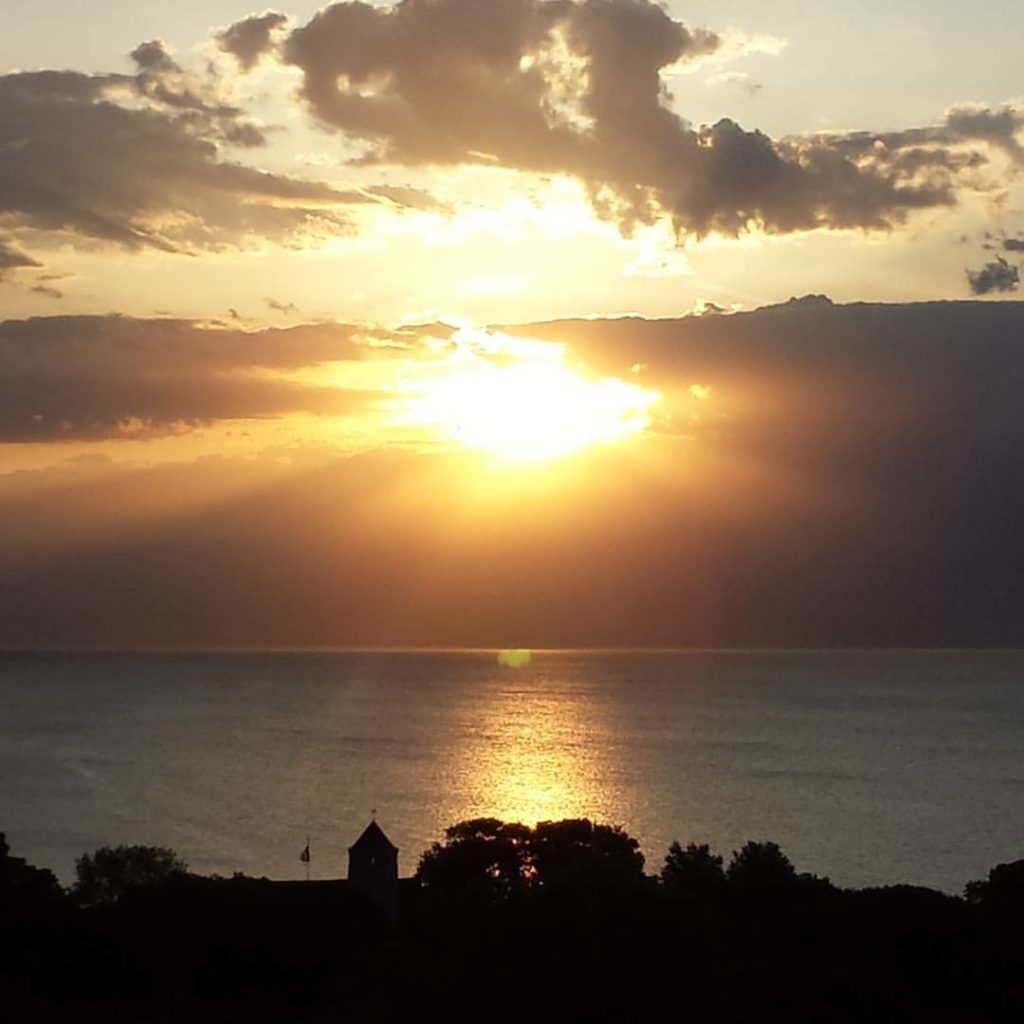
I have followed Koenen’s sunrises daily since she initiated her project two years ago, and have come to find there is surprising variation in each dawn: a menacing horizon filled with metallic clouds one day gives way to a fiery orb the next, while a succession of fiery orbs reveals that no two are alike. Similarly, each sunrise is colored by the changing character of the season; the warm-lit early skies of spring and summer melt the dark dawns of winter. The constant is, however, Koenen’s daily recording of her immediate environment from the same vantage point and view (albeit, with occasional interruptions), and use of social media to display and distribute her landscape images. Her work, alongside that of others, has prompted me to consider how Facebook functions as a social space for photographic practices that merge documentary and ritual, not only in their creation but also in their reception. Through such projects, private life, both the artist’s and the user’s, plays out in the public sphere in an act of shared ritual.
The recent exhibition “Natural Inclinations” at the Ukrainian Institute of Modern Art, Chicago, (April 7-May 28, 2017), curated by artist Linda Dorman, fed my interest. On view were works by seven artists, including Koenen and Dorman, whose photographic images are generated on social media. Koenen presented some 200 images from the series, titled “Sunrises and Dawns,” printed in cells across a progression of twelve grids, an arrangement that brings to mind the conceptual landscapes of Jan Dibbets, while also preserving the sequential way one encounters her photographs on Facebook.
The premise for the exhibition evolved from Dorman’s own social media participation, and from her observations, like mine, of its growing use by artists and photographers as a forum for documenting aspects of their daily lives:
“Each artist has a different reason for making these images. As artists, their eyes are focused and their sensitivity to their surroundings honed to their curiosity and what interests them most. Each project is carried out in uniquely purposeful manner, some are more disciplined or ritualistic, while others are more spontaneous and event driven.” (Note 1)
Although her work was not included in this exhibition, photographer Jin Lee also regularly posts images taken with her iPhone to Facebook. Collectively titled “Train View,” Lee captures the moving scenery viewed outside the train window during her weekly commute between Chicago and Normal, IL, where she teaches photography at Illinois State University. Taken with a careful, steady eye, Lee transforms the flat Midwestern landscape into an endless panorama of silos, trees, railroad tracks, houses and telephone wires, offering a quiet beauty in the familiar and the mundane. Seemingly empty fields reveal neat patterns of tilled soil dusted with white snow. A thicket of trees bathed in the red glow of an evening sunset appears otherworldly, as do those images in which the motion of the train renders her scenes as hazy phantoms or as abstract plays of color and light.
Other photographs – the smoke stacks of a distant factory, the totemic mills of a wind farm, a graffitied wall with the tag “The Drug Money” next to a construction crew – document the disparate economies that operate within this region of Illinois. They also connect the issues of documentary and ritual embedded in Lee’s Train View (the subject of a forthcoming solo exhibition at devening projects + editions in October) to those of labor – that performed by the many subjects she records and, more importantly, her own, a discovery revealed in the below Facebook exchange:
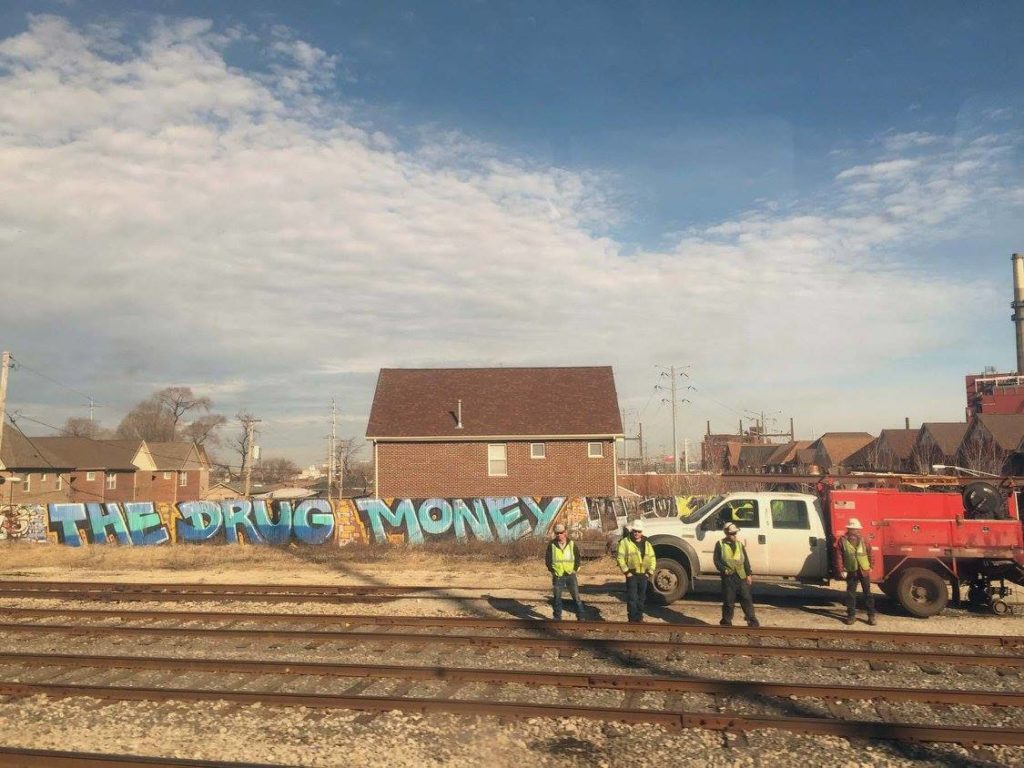
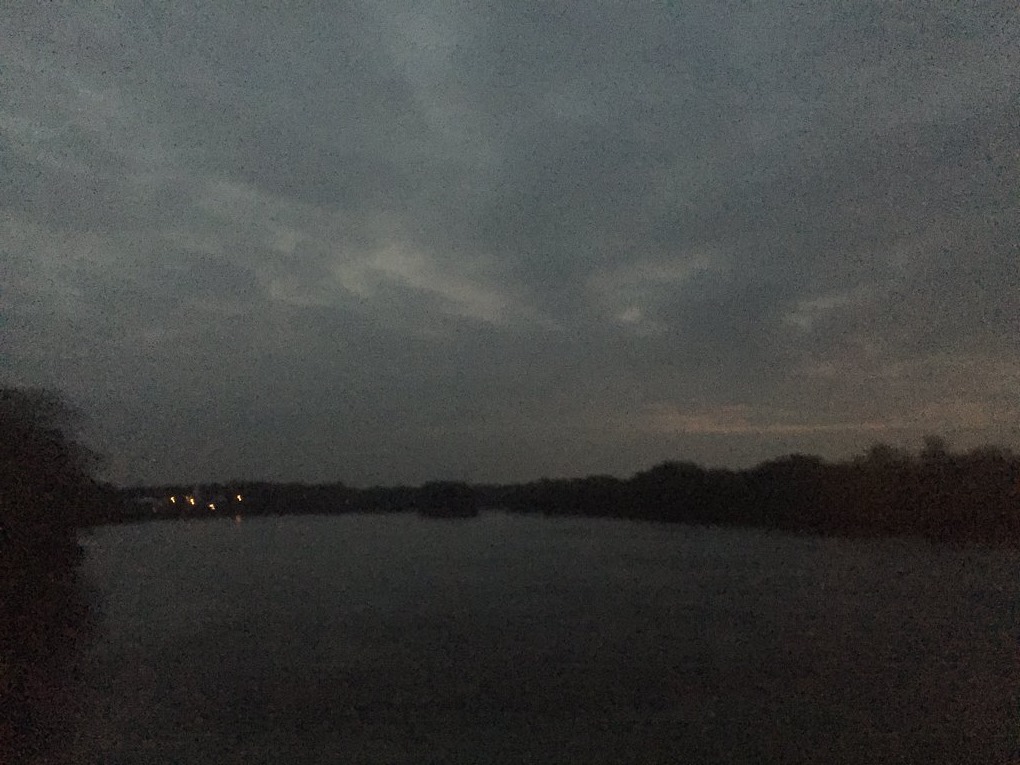
Jin Lee: With my teaching schedule, I ride evening trains every week where I watch the light fade and the landscape blend into darkness. Thanks to Adam Brooks who confirmed that in addition to ideas about landscape, time, and place, this series is also about work and commuting.
Jin Lee: I know…kind of slow about the obvious. It’s also about making work within the life circumstances and its limits.
Dan S Wang: How could it not be about commuting and labor?
When Lee began her project in 2014, it was with the idea that she would “not do any school or computer work during the ride,” but instead “just look.” (Note 2) The act of looking then became the central motivation behind the photographs under review here, whose formal and conceptual operations were defined by the dictates of her commute: the time of day, the speed of the train, the availability of light. Thus Train View not only documents the routine travel necessary to carry out her work as an educator, it also documents Lee’s production and artistic labor, one that spans a broad range of photographic isms and also embraces Conceptualism’s concern for systems and set limits.
I see resonances between Lee’s and Koenen’s Facebook photos and the work of conceptual artists Roman Opalka and On Kawara, who similarly blurred the boundaries between their personal and artistic lives through their ritualistic painting practices. Opalka’s Details, his lifelong project of painting numbers across a progression of canvases begun in 1965 until his death in 2011, was both a daily mediation on the infinite possibilities of his medium and a portrait of his own im/mortality. Kawara’s “Today” series (1966-2014), more commonly known as the Date Paintings, similarly registered his artistic life in relation to daily events, whether personal or historic, in spare acrylic paintings simply bearing the day’s date.
In chronicling their immediate environments within the context of their everyday rituals, Lee and Koenen present taxonomies of place, not unlike Bernd and Hilla Becher whose serial photographs of industrial structures offer topological studies of the last vestiges of the machine age. However, Lee and Koenen operate from a decidedly subjective point of view, sharing a more diaristic record of their respective landscapes, which despite their imposed parameters reveal nature as an unstable entity that changes over time.
Likewise, their use of social media openly exposes their artistic intentions and the processes behind their photographs’ construction. For instance, on one recent morning Koenen presented a bit of an aberration from her usual sunrises with an image of an ascending sun seen from within the netting of a spider’s web, whose maker clung to the window as if a sentinel. Here, the artist shifted our expected view of the distant landscape to a close-up of a spider and its delicate tracery.
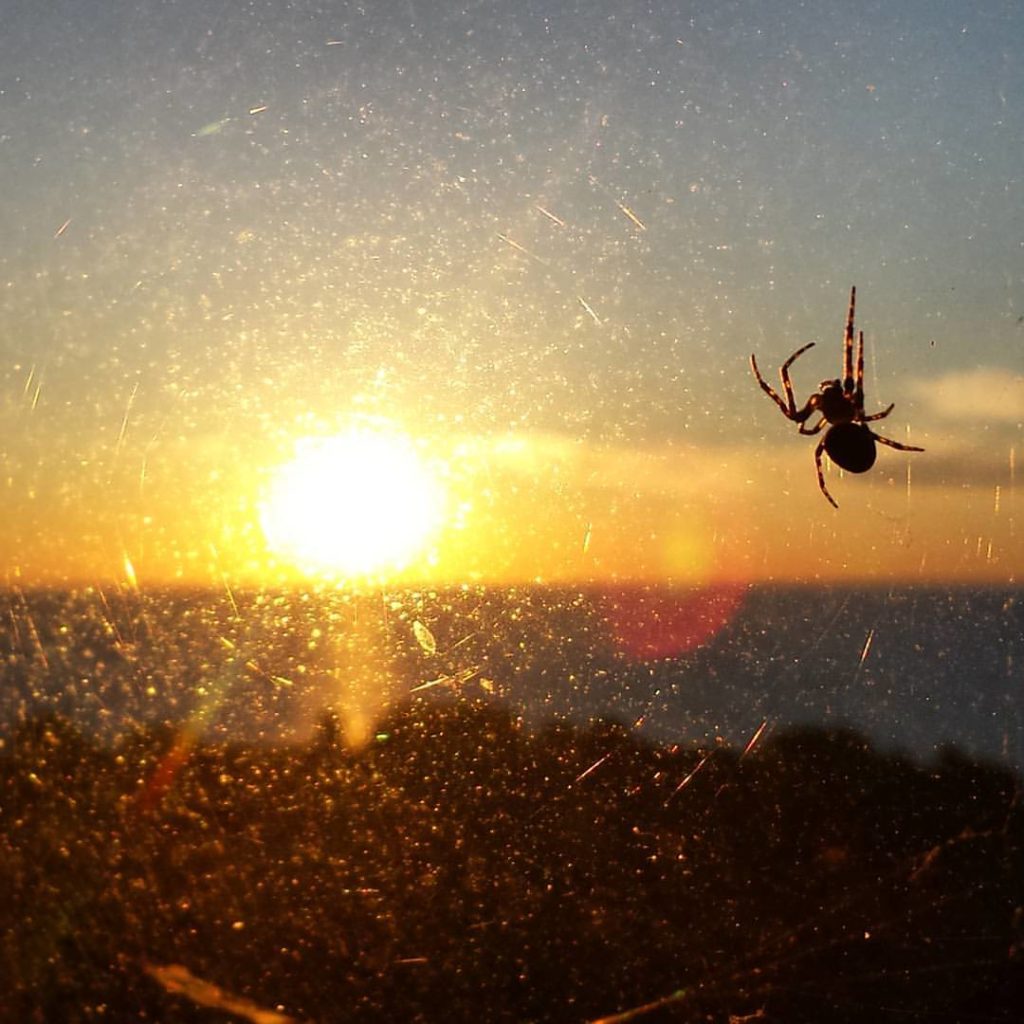
As noted by one follower:
Doug VanderHoof: Serious congratulations for taking a successful body of work in a new direction. It’s one thing to take an idea that just isn’t working and to try a new thing. But this is creative risk taking writ small. Everybody likes the current work; I’ll change it.
The above comment and those posted in response to Lee’s Train View reveal that Facebook has also become a discursive space for the public sharing of commentary and ideas about art. User interactions, including Likes, Comments, and Shares, function as a kind of critical discourse, or what Brian Dritcour, who sees Yelp’s crowd-sourced reviews as a form of citizen journalism, terms “vernacular criticism.” Dritcour argues that Yelp and other social-media platforms, with their rating metrics, have the potential to “reset art criticism” and usher a return to judgment, a view shared by critic Orit Gat:
The reason to consider Yelp, Amazon, or similar websites’ relationship to criticism is rooted in a historical moment in which users’ accounts of an experience or a product began to be framed as reviews. As with many other online concepts that caught on, these contributions were framed as “reviews” early on and came to define our continued use of the term for years to come. (See: Facebook’s “like” button.) (Note 3)
Gat, Dritcour, and others have written a lot about the impact of social media on criticism, both its potentials and problematics, and the proliferation of networked communities around art. Zachary Kaplan, of Rhizome, has written about the technological challenges of archiving these discussions on Facebook due to its inherent limitations and the fact that user interactions are generated through each user’s software. (Note 4) It is not my intention here to cover this same territory, other than to point out that vital conversations are happening on Facebook around art and photographic practices, such as those of Koenen and Lee, and that these regular exchanges are, in their own right, a form of ritual that reinforce the work’s production and meaning.
The photograph as both document and shared experience is also at the center of an archival project by Milwaukee-based artist Paul Druecke, whose A Social Event Archive – recently on view at the Milwaukee Art Museum (May 12-August 13, 2017) – is an analog or pre-digital example of the kind of practices I am discussing here. Druecke initiated his project in 1997 with an interest in understanding how social interactions are documented and shared by inviting the general public to submit personal snapshots of a “social occasion, public or private, current or historical,” to a physical archive he amassed for ten years. The exhibition, organized on the occasion of the project’s twenty-year anniversary, showcased its 731 images alongside works from the museum’s collection selected by Druecke that share the archive’s central images and themes. Birthdays, holidays, dances, picnics, funerals, and other kinds of gatherings and rituals are commemorated, in both color and black and white, offering meditations on individual and collective memory, the construction of social relationships, and the power of family and community.
Important to note is that Druecke’s project “predates and predicts Instagram and Facebook and the blurring of private and public that such social media platforms allow.” (Note 5) Yet like Koenen and Lee, he reveals how everyday images, whether physical or digital, personal memorials or landscapes, can foster social exchange through private and participatory acts of ritual.
Notes
- Curatorial statement by Lisa Dorman in exhibition press release, http://uima-chicago.org/natural-inclinations/.
- As stated by the artist in a Facebook post dated November 17, 2014.
- Orit Gat, “Art Criticism in the Age of Yelp,” Rhizome, November 12, 2013 http://rhizome.org/editorial/2013/nov/12/art-criticism-age-yelp/.
- Zachary Kaplan, “The Accidental Archivist: Criticism on Facebook, and How to Preserve It,” Rhizome, May 29, 2014 http://rhizome.org/editorial/2014/may/29/preserving-facebook-criticism/
- Lisa Sutcliffe, “Democratic Impulse: Paul Druecke’s A Social Event Archive,” in exhibition catalog, A Social Event Archive (Milwaukee Art Museum, 2017), p. 7.
